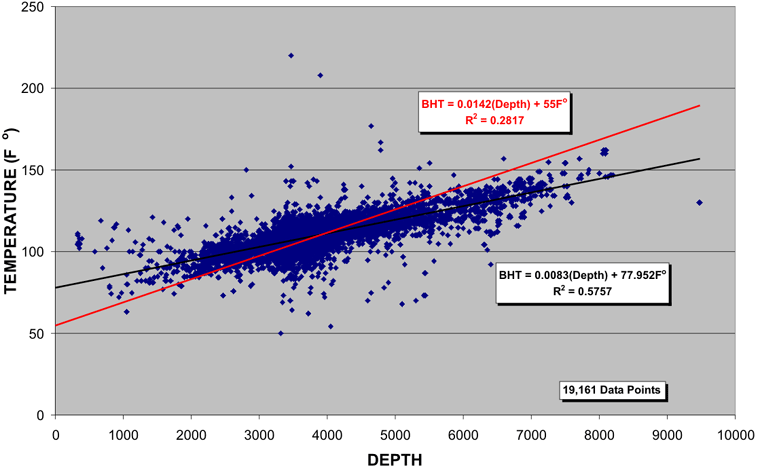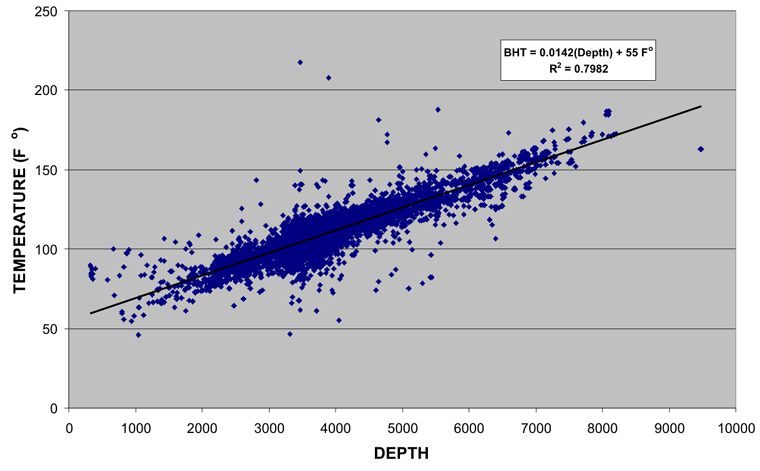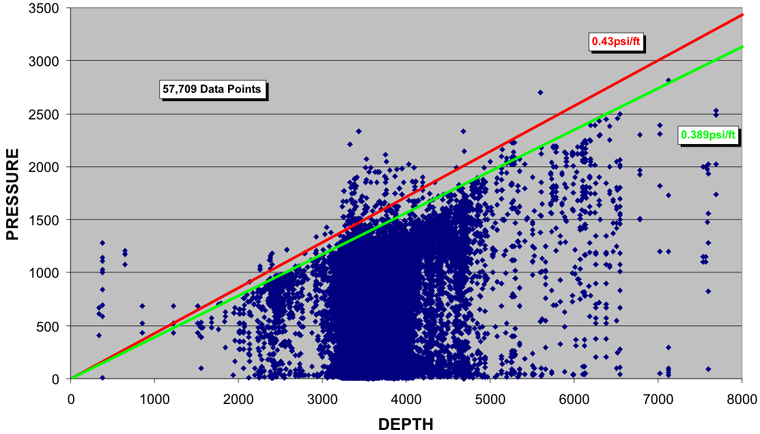 |

|
Kansas Geological Survey Open-file Report 2003-33 |
Reservoir Temperature
Bottom-hole temperatures (BHTs) recorded during the logging of a borehole are not at equilibrium with formation temperature and require a correction. In general, BHTs from shallow boreholes are too high and BHTs from deep boreholes are too low. The BHT correction factor adjusts the temperature recorded during logging to the true formation temperature. A plot of BHT's from 19,161 well bores, which have recorded Arbuckle Group at the bottom of the hole, show the obvious increase of temperature with depth. An unconstrained trend line (black) shows an intercept of approximately 78oF, which should be the average annual surface temperature. However, the ambient surface temperature for Kansas is much cooler (55oF, 13oC). By forcing the trend through the ambient temperature a correction factor can be generated from the difference between constrained and unconstrained trend lines. The corrected BHTs for the Arbuckle show the same relationship of temperature with depth and an improved fit (R2 = 0.8). The scattered outliers are obvious on the crossplots and are probably in significant part the result of tool malfunction, reading or recording errors at the time of logging, or data entry errors.
Arbuckle Bottom Hole Temperatures |
 |
Arbuckle Corrected Bottom Hole Temperatures

Reservoir Pressure
As temperature, recorded pressure is related to depth and burial history and increases with depth. Under hydrostatic conditions pressure should increase at 0.433 pounds per square inch per foot (psi/ft) or 9.74525 kPa/m. However pressure gradients above and below this value are not uncommon. Using final shut-in pressures (FSIP) from 57,709 drillstem tests from the Arbuckle of Kansas a pressure gradient below hydrostatic of 0.389 psi/ft (8.75 kPa/m) was determined. The large numbers of FSIPs below the gradient are to be expected in one of the most mature hydrocarbon producing zones in the world. The Arbuckle is a major disposal zone for oil field brines throughout Kansas and the significant under-pressured condition is not unexpected and should be of value if the Arbuckle becomes a target for CO2 sequestration.
Arbuckle Pressure
Final Shut-in Pressure vs. Depth

|
|
Last updated June 2003
http://www.kgs.ku.edu/PRS/publication//2003/2003-33/P1-07.html